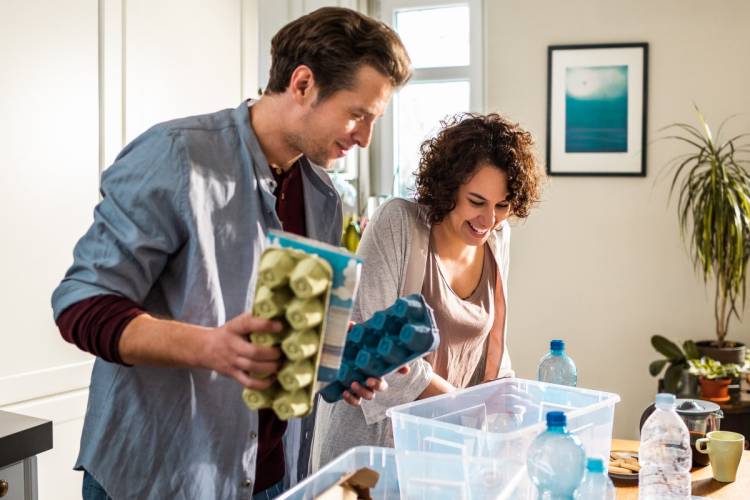8 myths about recycling
Discover 8 recycling myths that you were probably unaware of: what is recyclable, plastic and paper recycling, recycling containers and where to deposit items like toys and used napkins...
IT’S ECO, IT’S LOGICAL
Share

Although there is increasing awareness of the importance of recycling, many doubts can arise when sorting rubbish for proper recycling. Spain has been recycling for many years, but many items still generate doubts about where they should be deposited. Below is a list of common mistakes when recycling, provided by Ecoembes.

So where do I recycle this?
- Toys and other plastics do not go in the yellow bin. The yellow bin is only for recycling plastic containers, cans and Tetrapak. Plastic toys, baby bottles and pacifiers, kitchen utensils, and plastic buckets, such as those used on the beach, go into the regular rubbish.
- Dirty paper napkins and cardboard do not go in the blue container, but also with regular rubbish.
- Milk or juice cartons: always in the yellow container, as they are composed of cardboard, plastic and aluminium.
- Cardboard pizza boxes: as these have grease stains or include food scraps, they should be thrown out with regular rubbish and not in the paper recycling, because that dirt could reduce the quality of recycled paper.
- Kitchen paper and dirty papes: They also go in the normal rubbish bin, like nappies or wipes, and should never be flushed down the toilet.
- Glass jars and bottles, but not glasses and certain other types of glass, which must go to a waste facility. It is essential to differentiate between different types of glass. Lightbulbs cannot go in the green container, but we must take them to a local waste facility or collection centre. The same goes for mirrors, ashtrays, glasses, crockery or ceramic items, which must also be recycled in a waste facility or collection point, but never in the green recycling bin.
- Clothes hangers in the yellow bin. Did you know that the hangers given to us when we buy clothes are considered packaging? Therefore, they would have to be deposited in the yellow bin. The most sustainable thing to do would be to give them a second life, but if they seem too flimsy and you are not going to use them, you should dispose of them in the yellow container.
- Plasticised paper from the fishmongers and butchers. The packaging used to wrap items from the fish and meat counter must be separated. The paper goes in the blue container, and the plastic, in the yellow. Polystyrene trays go in the yellow container because they are 100% recyclable.
- Compostable bag from the fruit and vegetables section. The smaller, finer, transparent bags which are used for buying fruits and vegetables in bulk or for bagging together all the individual paper packages when we shop at the fish, meat or charcuterie counters are recycled in the brown organic bin.
- Paper and glass should be recycled loose, i.e., not bagged up. Collect these items in a plastic bag at home, to take them to the recycling bins. When we recycle glass in the green igloo-shaped bin, it has to be as clean as possible: lids and stoppers must be removed and recycled in the yellow bins, and corks thrown away. The plastic bag we have used to carry glass recycling to the bin must not be disposed of in the green igloo.
- And what do we do with expanded polystyrene? This is the material used for most takeaway boxes, trays used for transporting cold or hot meals, coffee cups to keep our drinks warm or the insulating filling used in many appliances... It is 0% biodegradable, that is, it never decomposes in the environment. You have to throw it in the recycling bin for containers, cans and cartons: the yellow one.






